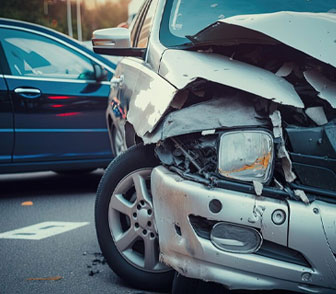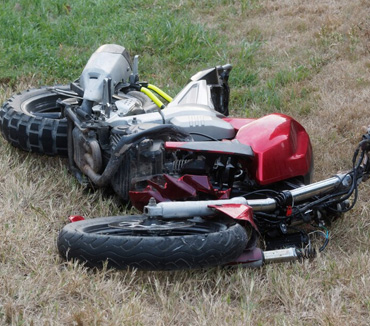E-Bike Accidents: What You Need to Know
Electric bikes (also called “e-bikes”) have grown in popularity over the last few years. Especially in cities, these fun little gadgets can be seen whirling around the streets. E-bikes and their special motors provide a boost in power. This means that the rider does not have to pedal quite as hard in order to keep moving. Keep in mind that mopeds and e-bikes are not quite the same thing, as most types of e-bikes are not fully automatic and still require the rider to pedal in order to move forward. They offer smoother rides, faster speeds, and less work for the rider but do still require some effort.
For the most part, e-bike accidents can happen just like any other bicycle accident. However, due to the motorized part of e-bikes, there are a few key differences. E-bikes can move and accelerate faster and handle differently from manual bicycles. This can cause the rider, or nearby car drivers and pedestrians to miscalculate how fast the e-bike is traveling. E-bike accidents can involve other e-bikes, cars, manual bikes or pedestrians and can be quite severe, depending on the other party involved.
An e-bike accident lawsuit is a claim for damages against the person or company responsible for injuries sustained by the rider of an electric bicycle. These lawsuits are typically brought against a motorist, bicyclist or pedestrian who causes the accident. But claims can also be brought against the manufacturer of the e-bike based on products liability.
What Is an E-Bike?
An electric bike, or e-bike, has an electric motor and runs on rechargeable batteries instead of being propelled solely by the pedaling of its rider as with a traditional bicycle.
The placement and power of the motor varies by e-bike, and batteries generally requiring recharging after between 20 and 100 miles. E-bikes come in different versions based how they are operated; some must be pedaled while pedaling is optional for others.
What are the Dangers of Using E-Bikes?
Riders of any two-wheeled vehicle take on many risks when they embark on a journey but riding an electrically boosted bike has a few more risks than their manual counterparts. These risks can result in injuries ranging from minor to major, and can even result in death to both riders and non-riders.
E-bikes can move at higher speeds than conventional bikes. Higher speeds mean greater injuries. An e-bike rider can cause greater injuries to themselves, to a pedestrian they hit and even to a motor vehicle. E-bike riders using roads have a responsibility to obey traffic laws and to watch for pedestrians. Like bike riders, they are required to follow traffic laws designed for cars.
Common minor injuries for bike accidents include such things as cuts, gashes and road rash. More severe injuries include fractures, sprains and dislocations. E-bikes also have a high risk of life-threatening brain trauma. When these bikes collide with a motor vehicle, the risk of death is much higher.
California E-Bike Laws
Since e-bikes are very popular in California as a form of transportation and recreation, the state has been determined to have legislation in place about their usage. In 2015, the California legislature passed AB1096, which classifies e-bikes into three categories based on their maximum speed and method of operation.
AB 1096 makes it clear that e-bikes have the same legal rights and restrictions as bicyclists in California. This means e-bike users must follow the same rules of the road all other cyclists do such as following the speed limit, safely passing other vehicles, and giving the right of way to pedestrians. E-bike users also do not have to worry about getting a license plate or having a driver’s license to use their bike.
Learn more about the California State Electric Bike Laws
The state defines three classes of e-bikes.
- Class 1 Electric Bike: This bicycle is also known as a “low-speed pedal-assisted electric bicycle.” This is a bicycle equipped with a motor that provides assistance only when the rider is pedaling, and that ceases to provide assistance when the e-bike reaches 20 mph.
- Class 2 Electric Bike: Bicycle equipped with a throttle-actuated motor that ceases to provide assistance when the e-bike reaches 20 mph. This bicycle does not necessarily need assistance from human propulsion by the pedals; the motor is capable of propelling the vehicle on its own.
- Class 3 Electric Bike: This bicycle is also called a “speed pedal-assisted electric bicycle.” This is classified in AB-1096 as an electric bike that receives assistance from a motor only when pedaling, and whose motor stops assisting after the bike is going at least 28 miles per hour. The operation of class 3 electric bicycles shall not be operated on a bicycle path or trail, bikeway, bicycle lane established, equestrian trail, or hiking or recreational trail, unless it is within or adjacent to a roadway or unless the local authority or the governing body of a public agency having jurisdiction over the path or trail permits, by ordinance, that operation 21207.5. (a).
What Are Common Injuries Associated With E-Bikes?
Heavier and faster than a regular bike, it is estimated the force of impact from an e-bike can be as much as 45 times more than a regular bicycle. As a result, injuries such as broken bones, severe cuts, traumatic brain injuries, and back and neck injuries are very common.
Some of the most common types of injuries associated with e-bikes include the following:
- Head, including traumatic brain injury (TBI)
- Back and spinal cord injuries
- Broken bones
- Road rash
- Cuts and bruises
How Can I Be Safe On or Around E-Bikes?
If you are using an electric bike, it is extremely important to be aware of your surroundings at all times. Know who is around you, how fast you are going, what is in front of you, and what might suddenly be in front of you at any moment. Test the bike before pedaling away. Make sure that the brakes are working and that the bike is in perfect riding condition with everything working correctly.
If you are going to ride on a sidewalk, always ride slowly and use the bell to alert pedestrians of your presence since most of these bikes are relatively quiet. Ride slowly until you are away from pedestrians. Always have your hands on the brakes and never ride so fast that you would not be able to stop quickly in the event of an emergency. If riding in the road, use hand signals when turning and always wear a helmet.
If you are a driver or pedestrian not using an e-bike but are near one, be alert as well. Give the rider enough space beside them and attempt to put space between you. Do not suddenly change lanes in front of them or distract the rider. If it is not possible to avoid driving past an e-bike, then move slowly and be very careful until you are clear of them.
Who Can Be Sued After an E-Bike Accident?
When an e-bike accident occurs, victims may be allowed to sue many different parties. The most common parties deemed to be responsible for liability include motor vehicle operators, pedestrians and other e-bike operators. In addition, should it be discovered that the e-bike itself malfunctioned and this contributed to the accident, victims can also sue the manufacturer on grounds of making and distributing a defective product that posed an unknown danger to consumers.
If your accident happened because of a malfunction with the e-bike itself, you may also be able to sue the manufacturer in a product liability lawsuit with one or more of the following claims:
- Defective design: an inherent flaw in the bike’s design,
- Defective manufacturing: although the design is safe, something in the production process made the bike unsafe
- Labeling or warning error: the manufacturer failed to adequately warn consumer of dangers of using the e-bike.
Document Your Injuries
Even if your injuries seem minor at the time, be sure to get medical treatment as quickly as possible and have your injuries entered into your medical records by doctors and other healthcare professionals. By doing so, an insurance company will have less chance of claiming your injuries were not serious enough to warrant significant compensation being paid. If questions arise about this, your legal counsel can handle the matter quickly and with excellent results.
Get the other party’s contact information, take pictures relevant to placement of the vehicle and get witness information if possible. Treat any e-bike accident as you would a car accident and document everything.
Compensation for Your Damages
The most common forms of financial compensation will include medical bills for current and future treatment, lost wages from your job, loss of companionship as well as compensation for the emotional and physical pain and suffering you are enduring following your accident. Since you want to be sure to get the maximum amount of money to pay these damages and provide you and your family with enough money going forward, make sure you work with an attorney who will fight hard to ensure you gain maximum compensation for your injuries and other damages and is not pushing to wrap the case up quickly.
Call an E-bike Attorney – CALL DUQUE LAW!
Electric bike accidents are often serious in nature. We understand that you are in a difficult time of life if you have been injured in an e-bike accident. We want to help by making this trying time as smooth and easy as possible for you. If you or a loved one sustained a minor or severe injury in an e-bike accident, you may be entitled to compensation. The statute of limitations requires that you file a lawsuit related to an e-bike injury within two years, so you should speak with an accident lawyer as soon as possible to better understand your legal rights and options.
Personal injury cases are difficult and require a skilled attorney. Do not try to take on the insurance company lawyers by yourself. Time limitations apply to any injury claim you might have, so for purposes of investigating a possible case and possibly preserving evidence, it’s best for you to contact us immediately after an accident.
Since our attorneys see many cyclist accidents throughout the year, we know how to obtain fair compensation for your injuries. Contact our experienced Personal Injury Attorneys at 1-877-241-9554 to learn more about your legal options. A free consultation is just a phone call away. You can even use our online contact form, and we will reply to you quickly.
Request A
Free Consultation
Fields Marked With An ” *” Are Required










